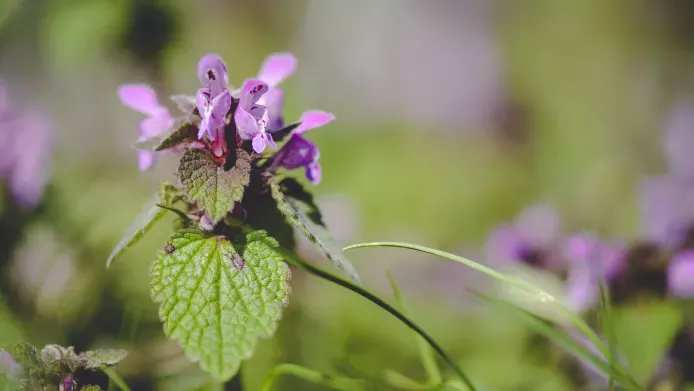The plants we think of as weeds are a vital part of our natural environment.
The most common definition of a weed is ‘a plant in the wrong place’ – a dandelion popping up in a pristine lawn, stinging nettles taking over a flower bed, or wild grasses appearing among crops.
But no plant is a weed in nature – we simply label certain plants as weeds when they get in the way of our plans. As a result, we can wind up in an endless battle to eradicate them, in some cases involving damaging pesticides.
The virtues of weeds
Ralph Waldo Emerson, writer and philosopher, wrote in 1878: ‘What is a weed? A plant whose virtues have not yet been discovered.’
Weeds can also be plants whose virtues have been forgotten. Many of today’s ‘weeds’ were once cultivated plants but fell out of favour.
For example, in the Middle Ages ground elder (Aegopodium podagraria) was cultivated as a food crop and medicinal herb used mainly to treat gout. These days gardeners do all they can to eradicate it from their borders, without a thought for the value it once held.

Red dead nettle, Lamium purpureum,
Clement Peiffer/iStock
At Grow Wild, we’re all about wildflowers – and many common UK weeds are just wildflowers by another name. As such, they have a vital role to play in supporting a diverse and healthy ecosystem, providing crucial food, shelter and nesting sites for the bees and other insects that pollinate our plants.
“Many common UK weeds are just wildflowers by another name.”
Take the often-overlooked nettle (Urtica dioica). Fast-growing and hardy, they often out-compete other plants when left to their own devices. Their irritating sting makes them an unwanted visitor in garden borders, but they are a great food source for a whole host of wildlife. Their stinging leaves also provide protection for insects from larger grazing animals, which have learnt not to approach a nettle patch!
Did you know?
The colourful peacock and small tortoiseshell butterflies like to lay their eggs on nettles, which provide the perfect food for the caterpillars once they have hatched. They protect themselves in special silk webs among the nettle leaves while they grow.
Variety is the spice of life
The more varied plants growing in our countryside, the more varied pollinators they can support – and it works both ways. Pollination is a mutually beneficial interaction: plants are able to reproduce, and pollinators have enough food to survive.
In our countryside, by removing weeds and creating single-species food crops, we are threatening the survival of pollinators.
Colonies of bees feeding from pollen provided by a single type of food crop are at higher risk of disease, or even being wiped out completely. A 2010 study showed that bees fed with pollen from a single species of plant (a monofloral diet) produced fewer bacteria-fighting antiseptics than those fed from a variety of sources.
Plus, fewer weeds growing alongside crops means pollinators may have to travel further to forage for the pollen and nectar they need to survive, putting them at greater risk of exhaustion and encountering harmful pesticides.
Read more about the importance of biodiversity.